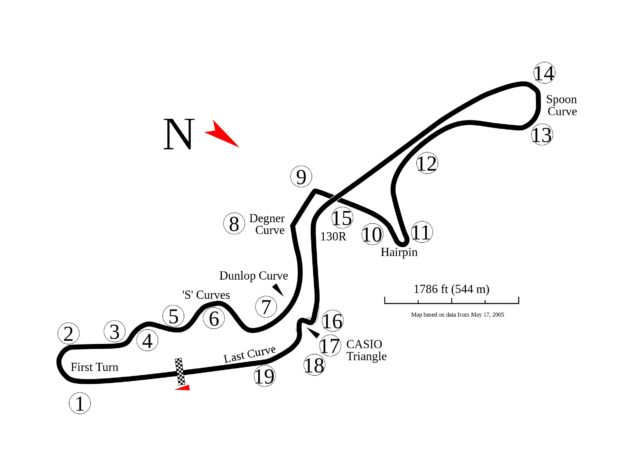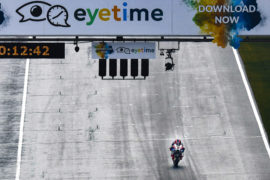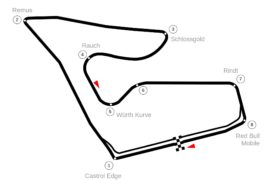There aren’t many circuits as challenging as the Suzuka International Racing Course. So what’s the key to a quick lap?
Suzuka is a real rollercoaster racetrack. The unique figure-of-eight layout ensures that it is unlike any other circuit on the racing calendar, but the Japanese venue isn’t a gimmick, it’s a true test of skill and bravery for every rider.
As riders come across the start-finish line, it is a rare chance to catch their breath as they look across for their pitboard – and the Suzuka 8-Hours is not a short race.
The mental challenge of Suzuka is huge, and it’s easy to get fatigued. The heat and humidity play havoc with the riders, but the 20 corners, with most linked together, mean that mental errors are heavily punished. With such a long lap and stifling conditions, the lap counter seems to grow at a snail’s pace.
As the riders start the lap, they will grab sixth gear as they come across the line but it’s all about getting ready for Turn 1, a fast right-hander, where the bikes approach in sixth and start braking just before the 200m board.
Turn 1 is the beginning of the Suzuka Snake, where the track bends around the contours of the land, and one turn leads directly to the next. If you’re wide at one corner, it can affect the next three.
Having snatched back three gears, the key thought when peeling into Turn 1 is about being in the right part of the track for Turn 2. Riders will clip their apex just outside the kerb for Turn 1 and run the bike wide for 2, where they hook back another gear on the entry.
Trying to square off Turn 2 and use the power of the superbikes, riders will slide the bike on the exit to get into the right position on the track for the first left-handed corner of the lap.
Having a bike that can change direction quickly is key at Suzuka, and that’s shown through Turns 3 and 4. Trying to hold a shallow line for Turn 3 is the key to this section of the track.
Keeping a minimum input and not scrubbing speed on the change of direction, riders will enter Turn 3 in second gear, and hug the kerb as closely as possible on the exit to be in the right place for Turn 4, and the following pair of bends, before the run up the hill towards the Dunlop Curve.
These four corners are all linked together and being off line is punished heavily by the clock.
The Dunlop Curve is an almost never-ending left-hander, and this is one section of the track where the feeling from the bike is key for riders. The rear wants to slide as the bike accelerates on the side of the tire.
With the bike banked over on the left side of the tire for an age through this corner, riders will short-shift to fourth gear to try and minimise that slide. Once you are through Dunlop, you come straight into the Degner Curves.
Named after Ernst Degner, the East German defector who sold the secrets of the two-stroke to Suzuki in exchange for passage to the West and a 1962 world championship, this sequence of corners is fast through the first right-hander before the slower second-gear corner that leads onto the short straight and the end of the first sector of the lap.
The exit from the second Degner is key and riders will look to use every inch of the track, running as much kerb on the exit as possible, before the short straight leading into the Honda hairpin.
Fast on entry, riders will sweep through the right-hander leading to the hairpin in third gear, but even before the bike turns in, the riders’ thoughts are on the hairpin – and braking smoothly for the first gear left-hander.
The bike wants to snake away under braking, but getting it turned in smoothly and getting through this corner is key to a good lap time. It’s hard to make up time in slow corners, but you can lose a lot of time by getting them wrong.
Patience is key through this hairpin, and getting the bike turned quickly and set up for the exit is crucial as the rider gets hard on the gas.
The chicane that was added to Turn 12 has taken away one of the most challenging corners in short circuit racing, but with little to no run-off it was a necessary casualty to safety following Marco Melandri’s 2003 crash that left the then MotoGP rookie with a fractured leg.
That right-left-right chicane leads into the Spoon Curve, and riders will try and straight line it as much as possible to be in the right position for the long right hand curve that acts as the entry to Spoon. Like the earlier Dunlop Curve, Spoon is all about being on the left side of the tire for what seems like an age.
The temperature in the tire can rise as quickly as the speed, depending on the line, but for most riders patience pays off and they break Spoon into two parts: they take the complex corner in third before blasting onto the curved back straight and shifting through the gearbox into sixth.
The straight ends with the famous 130R. This corner was re-profiled and tightened to make it slower, but it’s still a fearsome fourth-gear corner where riders brake at the 150m board. Coming through 130R, the bikes are able to run wide on the exit before braking early into the Triangle Chicane at the end of the lap.
Hooking back to first gear, the bike will slide on the entry to one of the best overtaking opportunities on the lap. Flip-flopping from right to left, the riders will now exit the chicane and get on the gas with the rear sliding through the final corner, a long right-hander, as bike accelerate through the gears.
As they come across the line, they will then grab a look at their pitboard – that rare chance to catch their breath – and wonder how the laps are ticking by so slowly, ready to do it all over again.
This Suzuka 8-Hours story is made possible by our A&R Pro members. If you like reading endurance racing stories on Asphalt & Rubber, you should consider supporting this content by signing up for A&R Pro.




